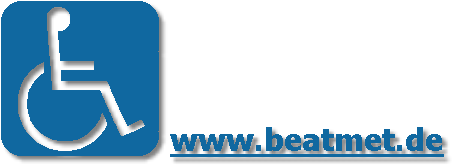You are on the Homepage beatmet.de.
The following pages will be dealing with the issue respiration, especially in a domestic surrounding.
|
My name is Eduard Frasch; I'm 29 years old, an industrial plumber by occupation, and I have been married since 1995. In November 1998
I had an automobile accident on the way home.
Since then I have been paralysed from the neck down and must be
ventilated. I spent six months in an intensive care unit in Hamburg, in the Traumatology Hospital Boberg, followed by around a further year in its paraplegic centre. I have been at home since June 2000 and am being cared for around the clock by a team of carers. I have put together a few photos, so as to give a brief insight into my present life.
I have now been ventilated since 1999 with a PLV.This device
has a somewhat peculiar appearance, but it operates
problemfree regardless of how it's handled.
(proven technology!); it can even tolerate minus
temperatures without any problem. The setting
always ranges between 850ml x 9 breaths per pro min
(lying down) and 900ml x 10 (in a sitting position).
|
